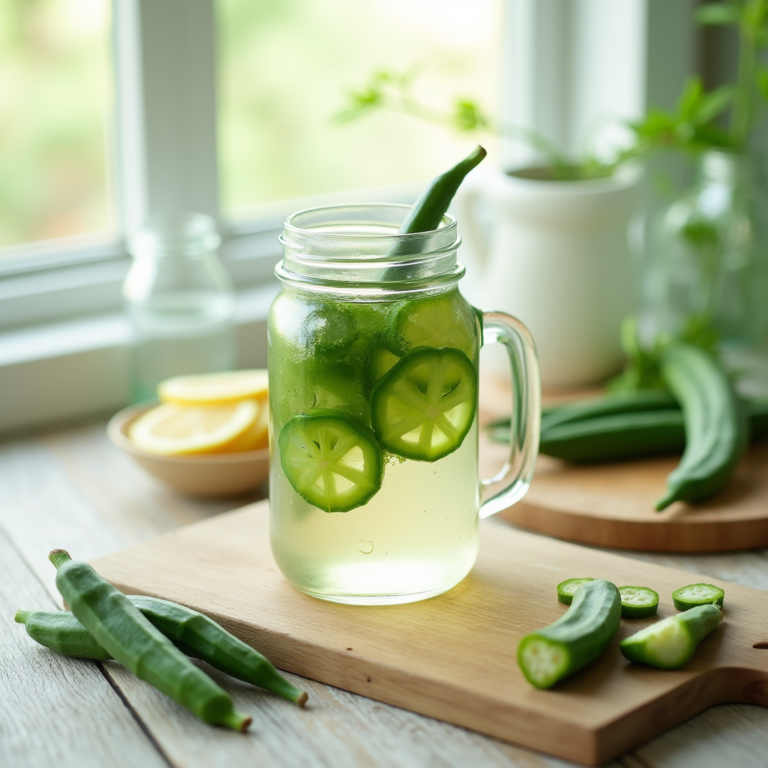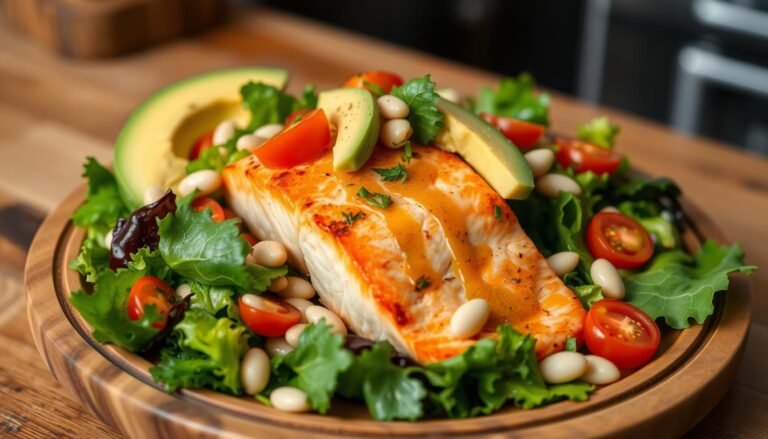Plant-Based Protein Power: 12 Quick Recipes Vegetarians Love
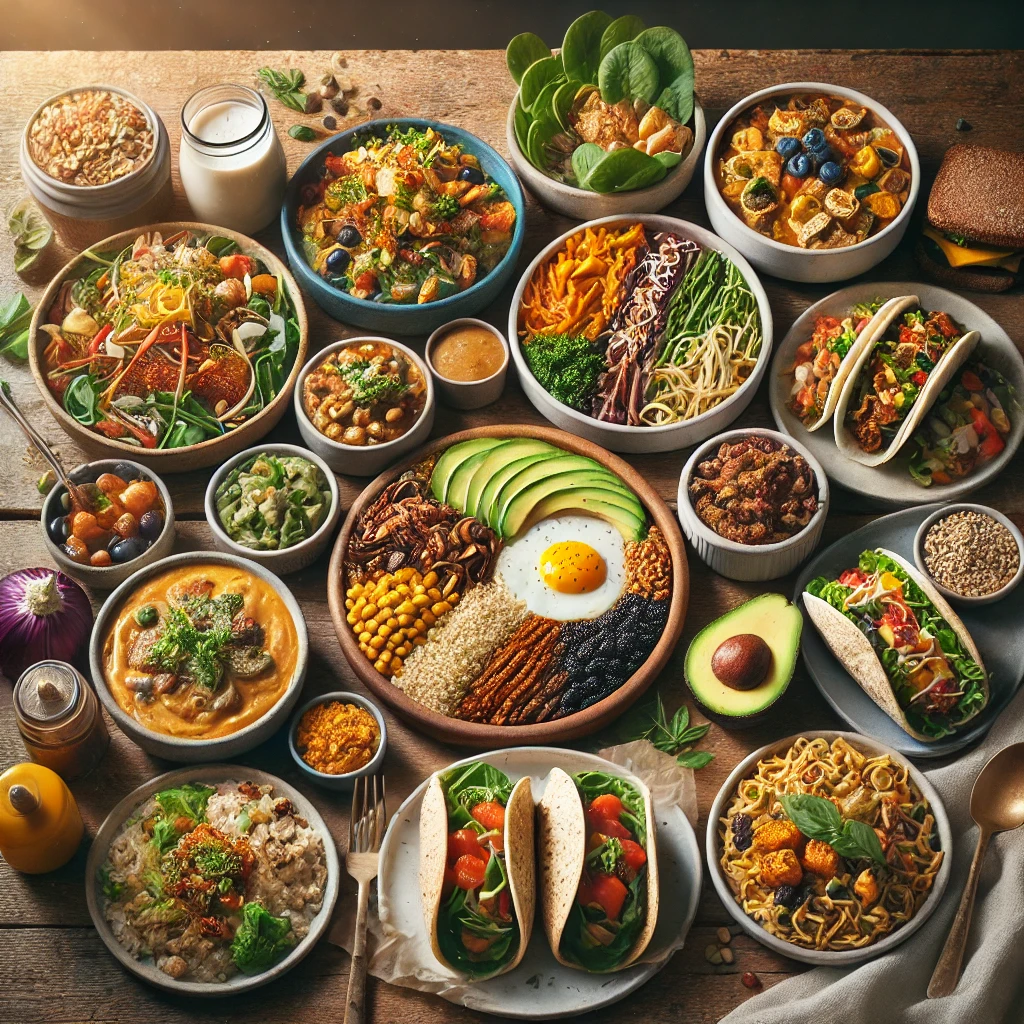
Table of Contents
Introduction: Can You Build Muscle and Stay Energized Without Meat?
Welcome to HealthyFam—where fast meets flavorful, and health is always on the menu!
🎶
Power in plants, strength so pure,
Muscles grow and minds endure!
Green and clean, light yet strong,
Plant protein fuels you all day long!
If you’ve ever wondered whether it’s possible to get enough protein on a plant-based diet, you’re not alone. Many people believe that meat is the only way to fuel their muscles and stay energized. But guess what? Plants are packed with protein power too—and in this article, we’ll show you how to harness it! With these 12 quick recipes, you’ll discover delicious, nutrient-dense meals that vegetarians (and anyone else!) will absolutely love. Ready to unlock the secret of Plant-Based Protein Power?
🍃 Food for Thought 🍃
“Think of your body as a machine—what you fuel it with determines how well it runs. Plant-based proteins not only provide essential nutrients but also support heart health, digestion, and longevity. Skipping them entirely means missing out on fiber, antioxidants, and plant-powered benefits. The best diet isn’t about extremes—it’s about balance. Are you giving your body the fuel it needs to thrive? 🌱💪”
Overview: Why This Plant-Based Protein Power Recipe Collection Is Special
🌱 What Happens When You Eat Plant-Based Protein?
Eating plant-based protein can have several effects on the body’s organs, mostly positive, especially when replacing excessive animal protein intake. Here’s how different organs might respond:
1. Heart
- Benefit: Plant-based proteins (like lentils, beans, tofu, and quinoa) can lower cholesterol and reduce the risk of heart disease.
- Why: They lack saturated fats and often contain fiber, which improves cardiovascular health.
2. Liver
- Benefit: A plant-based diet can ease liver function by reducing fat accumulation.
- Why: Less processed food and animal fat mean a lower risk of fatty liver disease.
3. Kidneys
- Benefit: Plant proteins put less strain on the kidneys compared to excessive animal protein.
- Why: They produce fewer harmful byproducts like uric acid and may lower the risk of kidney disease.
4. Digestive System (Stomach and Intestines)
- Benefit: Improved digestion and gut health.
- Why: Plant proteins are high in fiber, promoting a healthy gut microbiome and preventing constipation.
5. Muscles
- Benefit: Supports muscle growth and recovery, though may require variety for full amino acid profile.
- Why: While some plant proteins lack certain essential amino acids, combining sources (e.g., rice and beans) ensures balance.
6. Bones
- Benefit: Maintains bone density, but calcium intake should be monitored.
- Why: Some plant proteins (like tofu and almonds) contain calcium, but if not well-planned, a plant-based diet could risk calcium deficiency.
Overall, eating plant-based protein is generally good for the body,
but balance is key.
Variety ensures you get all essential nutrients!
This collection of 12 quick recipes is designed for busy people who want to eat healthy without spending hours in the kitchen. Each recipe takes less than 30 minutes to prepare, making them perfect for breakfast, lunch, dinner, or snacks. Whether you’re a seasoned vegetarian or just exploring plant-based eating, these dishes are simple enough for beginners but exciting enough for foodies.
- Time Requirement: 15–30 minutes per recipe
- Difficulty Level: Beginner-friendly
- Key Benefits: High in protein, rich in fiber, and loaded with vitamins and minerals
These recipes prove that eating plant-based doesn’t mean sacrificing flavor or nutrition. Let’s dive into the essential ingredients!
Essential Ingredients: The Building Blocks of Plant-Based Protein Power
To create meals bursting with Plant-Based Protein Power, you’ll need some key ingredients. Here’s a list of staples, along with why they matter and substitution options:
- Lentils
- Why They’re Important: Lentils are a protein powerhouse, offering about 18g of protein per cooked cup. They also provide iron and fiber.
- Substitutions: Chickpeas, black beans, or split peas work well.
- Tofu/Tempeh
- Why They’re Important: These soy-based products are versatile and offer around 20g of protein per half-cup serving. Tempeh has a nuttier flavor and firmer texture.
- Substitutions: Seitan or edamame can step in for variety.
- Quinoa
- Why It’s Important: Quinoa is one of the few plant foods considered a “complete protein,” meaning it contains all nine essential amino acids.
- Substitutions: Brown rice, farro, or millet.
- Nuts and Seeds
- Why They’re Important: Almonds, chia seeds, hemp seeds, and pumpkin seeds add crunch, healthy fats, and extra protein.
- Substitutions: Sunflower seeds or cashews.
- Plant-Based Milks
- Why They’re Important: Fortified almond, soy, or oat milk boosts calcium and vitamin D intake while keeping recipes creamy.
- Substitutions: Coconut milk or rice milk.
- Nutritional Yeast
- Why It’s Important: This deactivated yeast adds a cheesy flavor and provides B vitamins and protein.
- Substitutions: Parmesan cheese (if not vegan).
- Vegetables
- Why They’re Important: Spinach, broccoli, and sweet potatoes contribute protein and micronutrients like magnesium and potassium.
With these ingredients in your pantry, you’re ready to whip up amazing meals. Let’s move on to the step-by-step instructions!
Step-by-Step Instructions: Cooking Techniques Made Easy
Each recipe follows a similar structure, so once you master these techniques, you’ll breeze through the entire collection. Here’s a general guide:
- Prep Your Ingredients
- Wash and chop vegetables.
- Measure out spices, sauces, and grains.
- Cook Grains or Legumes
- Boil water and cook quinoa, lentils, or rice according to package instructions. For faster results, use pre-cooked options.
- Sauté Proteins
- Heat olive oil in a pan over medium heat. Add tofu, tempeh, or seitan and season with soy sauce, garlic powder, or turmeric for flavor.
- Roast Vegetables
- Toss chopped veggies with olive oil, salt, and pepper. Roast at 400°F (200°C) for 20–25 minutes until tender and caramelized.
- Blend Sauces or Dressings
- Combine tahini, lemon juice, garlic, and water in a blender for a creamy dressing. Adjust seasoning to taste.
Tips for Success:
- Use nonstick pans to reduce oil usage.
- Prep ingredients ahead of time for quicker assembly.
- Experiment with spices like cumin, paprika, and curry powder for bold flavors.
Now let’s talk about assembling these recipes beautifully!
Assembly: How to Build Your Plant-Based Protein Power Meals
Presentation matters—even if you’re eating alone! Follow these steps to assemble your dish:
- Start with a Base
- Use quinoa, brown rice, or leafy greens as your foundation.
- Add Protein
- Layer lentils, tofu, or chickpeas on top of the base.
- Pile on Veggies
- Arrange roasted or raw veggies for color and texture.
- Drizzle with Sauce
- Finish with a dollop of hummus, tahini dressing, or avocado spread.
Storage and Make-Ahead Tips: Keep It Fresh and Ready to Go
One of the best things about these Plant-Based Protein Power recipes is that they’re perfect for meal prep! Here’s how to store and reheat your creations for maximum freshness:
Storing Ingredients Separately
- Grains & Legumes: Store cooked quinoa, rice, or lentils in airtight containers in the fridge for up to 5 days. For longer storage, freeze portions in freezer-safe bags.
- Proteins (Tofu/Tempeh): Marinate tofu or tempeh before cooking, then refrigerate for up to 3 days. Cooked tofu can be stored in its marinade to stay moist.
- Veggies: Roasted veggies last 3–4 days in the fridge. Raw veggies like spinach or kale should be kept dry and sealed in bags or containers.
Reheating Like a Pro
- Microwave Method: Add a splash of water or broth to grains or proteins before microwaving to prevent drying out. Heat in 30-second intervals, stirring in between.
- Oven Method: For roasted veggies or baked dishes, reheat in the oven at 350°F (175°C) for 10–15 minutes to retain texture.
- Sauces: Blend creamy sauces like tahini or hummus again after refrigeration to restore smoothness.
Make-Ahead Magic
- Prepare large batches of staples like quinoa, roasted veggies, or marinated tofu on Sunday for quick assembly during the week.
- Portion meals into individual containers for grab-and-go lunches.
Quick and healthy vegetarian recipes that are packed with Plant-Based Protein Power
1. Quinoa Buddha Bowl
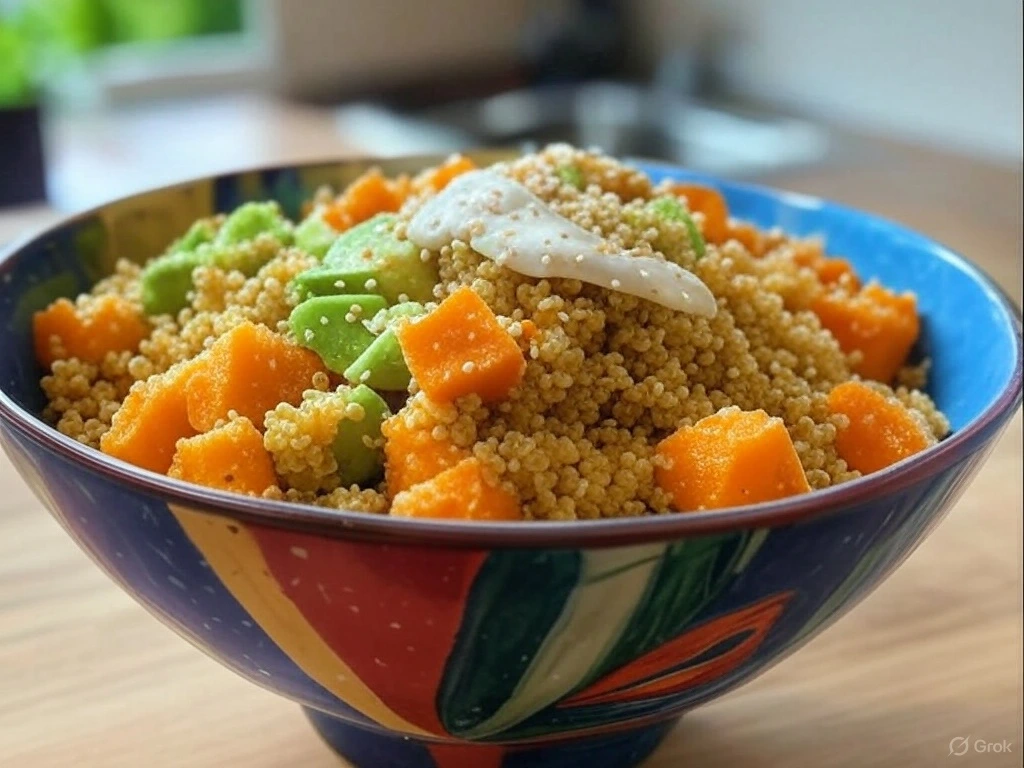
- Description: A vibrant bowl layered with fluffy quinoa, roasted sweet potatoes, chickpeas, avocado slices, and a drizzle of tahini dressing.
- Prep Time: 20 minutes
- Cooking Time: 15 minutes
- Difficulty: Easy
Ingredients:
- 1 cup quinoa
- 1 sweet potato (cubed)
- 1 can chickpeas (drained)
- 1 avocado (sliced)
- 2 cups mixed greens
- 2 tbsp tahini
- 1 tbsp lemon juice
- Salt and pepper to taste
Instructions:
- Cook quinoa according to package instructions (1 part quinoa to 2 parts water).
- Toss sweet potato cubes with olive oil, salt, and pepper. Roast at 400°F (200°C) for 20 minutes until tender.
- Season chickpeas with paprika, garlic powder, and olive oil; roast alongside the sweet potatoes for 15 minutes.
- For the dressing, whisk tahini, lemon juice, a splash of water, salt, and pepper until smooth.
- Assemble the bowl: Start with quinoa as the base, then layer roasted veggies, chickpeas, avocado slices, and greens. Drizzle with tahini dressing before serving.
2. Tofu Scramble Breakfast Wrap
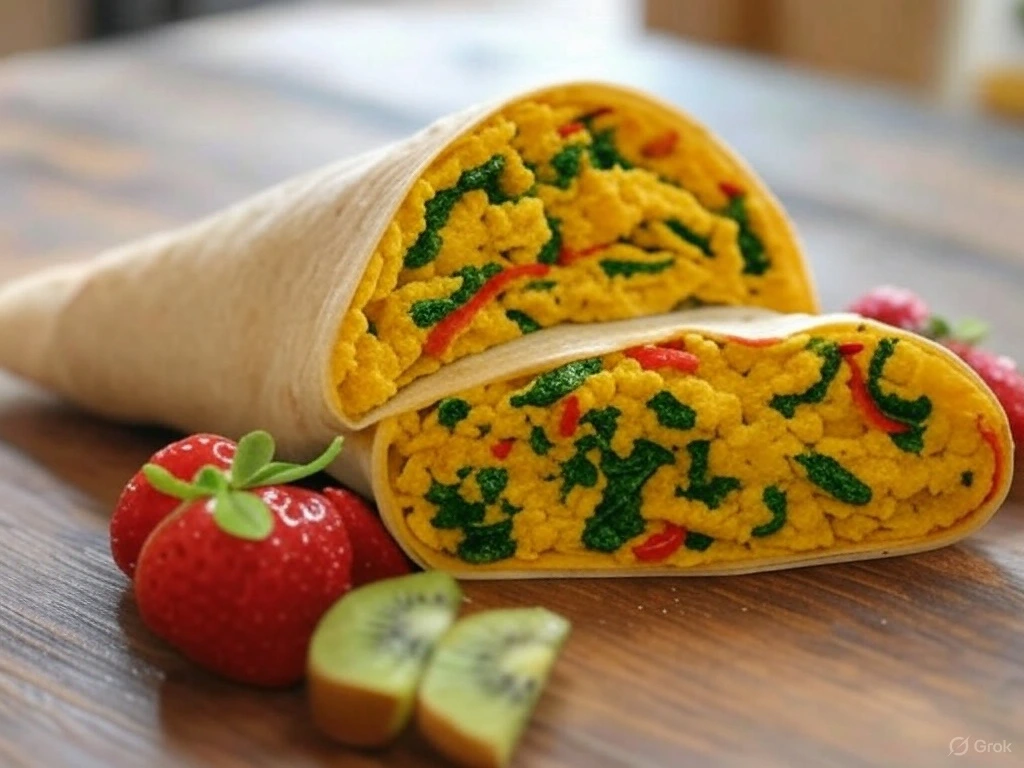
- Description: A protein-packed tofu scramble mixed with turmeric, spinach, and bell peppers, wrapped in a whole-grain tortilla.
- Prep Time: 10 minutes
- Cooking Time: 10 minutes
- Difficulty: Easy
Ingredients:
- 1 block firm tofu (crumbled)
- 1 tsp turmeric
- 1/2 tsp garlic powder
- 1/2 cup spinach
- 1/4 cup diced bell peppers
- 2 whole-grain tortillas
- Salt and pepper to taste
Instructions:
- Heat olive oil in a pan over medium heat. Add crumbled tofu and sauté for 5 minutes.
- Stir in turmeric, garlic powder, salt, and pepper. Cook for another 2–3 minutes until flavors meld.
- Add spinach and bell peppers; cook until wilted.
- Spoon the scramble onto tortillas, fold into wraps, and serve warm with fresh fruit or salsa.
3. Lentil and Sweet Potato Curry
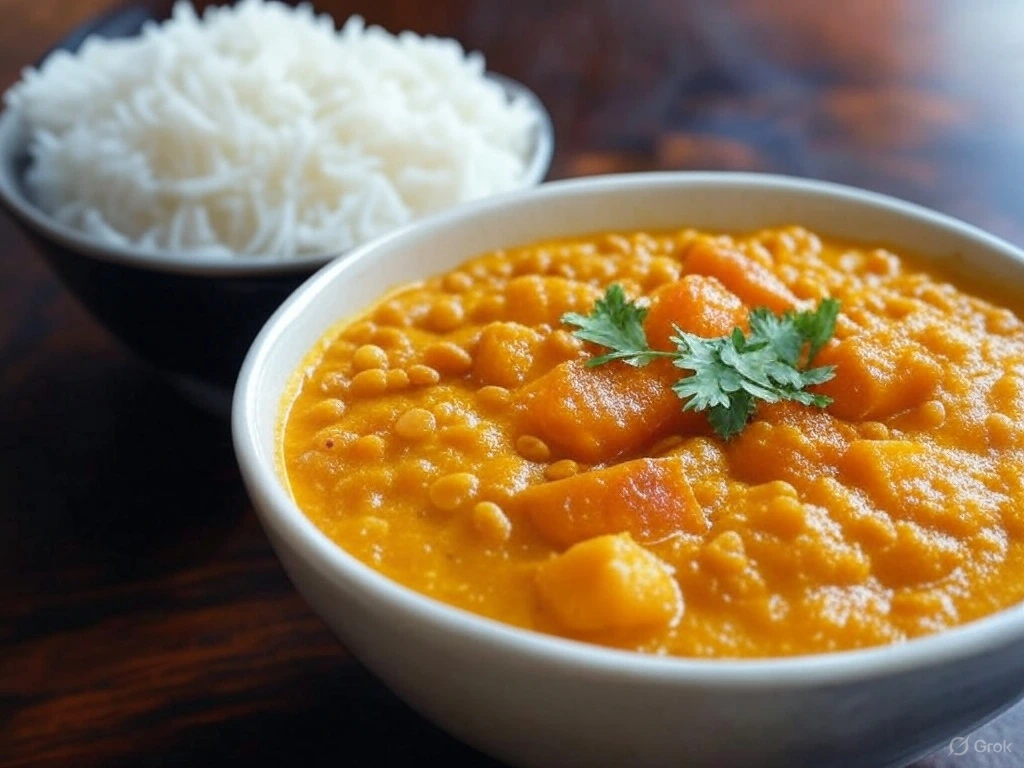
- Description: A creamy coconut milk-based curry loaded with tender lentils, chunks of sweet potato, and fragrant spices like cumin and coriander.
- Prep Time: 10 minutes
- Cooking Time: 25 minutes
- Difficulty: Moderate
Ingredients:
- 1 cup red lentils
- 1 sweet potato (diced)
- 1 onion (chopped)
- 2 cloves garlic (minced)
- 1 can coconut milk
- 1 tsp cumin
- 1 tsp coriander
- 1/2 tsp turmeric
Instructions:
- Sauté onion and garlic in olive oil until soft.
- Add spices (cumin, coriander, turmeric), stirring for 1 minute to release aroma.
- Pour in coconut milk and 2 cups of water; bring to a simmer.
- Add lentils and sweet potatoes. Simmer for 20 minutes, stirring occasionally, until lentils are tender.
- Serve hot with basmati rice or naan bread.
4. Chickpea Salad Sandwich
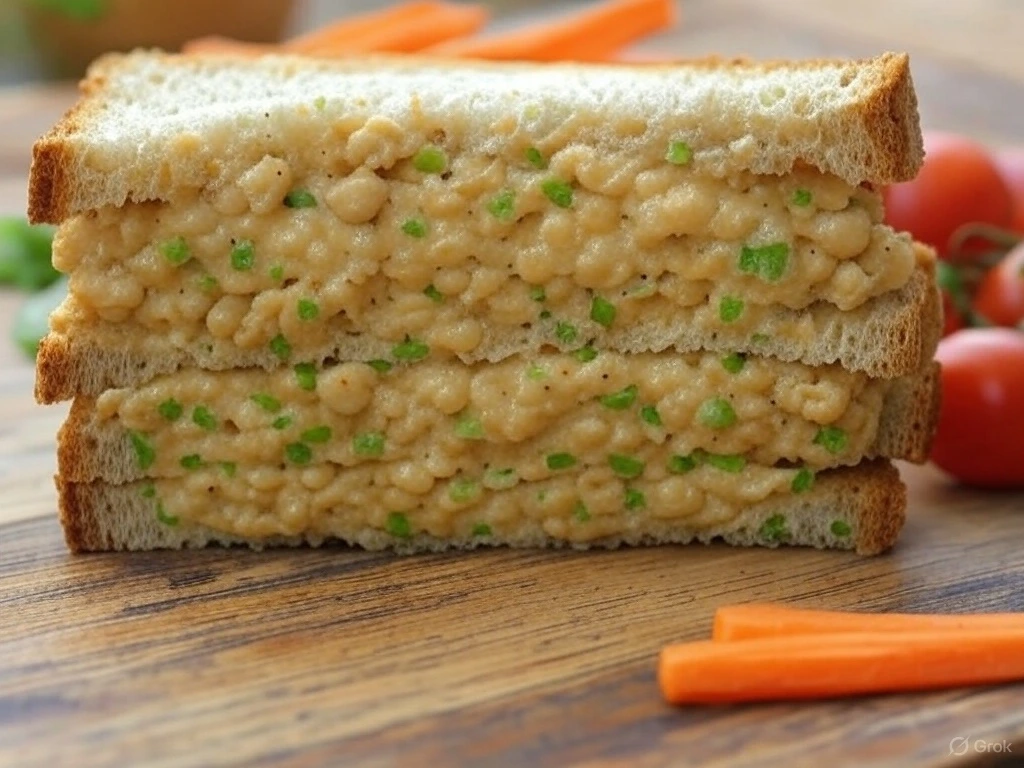
- Description: A hearty sandwich made with mashed chickpeas, vegan mayo, celery, and Dijon mustard, served on whole-grain bread.
- Prep Time: 10 minutes
- Cooking Time: None
- Difficulty: Easy
Ingredients:
- 1 can chickpeas (mashed)
- 2 tbsp vegan mayo
- 1 tbsp Dijon mustard
- 1/4 cup diced celery
- Salt and pepper to taste
- Whole-grain bread
Instructions:
- In a bowl, mash chickpeas with a fork or potato masher.
- Mix in vegan mayo, Dijon mustard, diced celery, salt, and pepper.
- Spread the mixture onto slices of whole-grain bread. Top with lettuce or tomato slices if desired.
- Cut sandwiches diagonally and serve with carrot sticks or chips.
5. Spinach and Mushroom Stuffed Shells
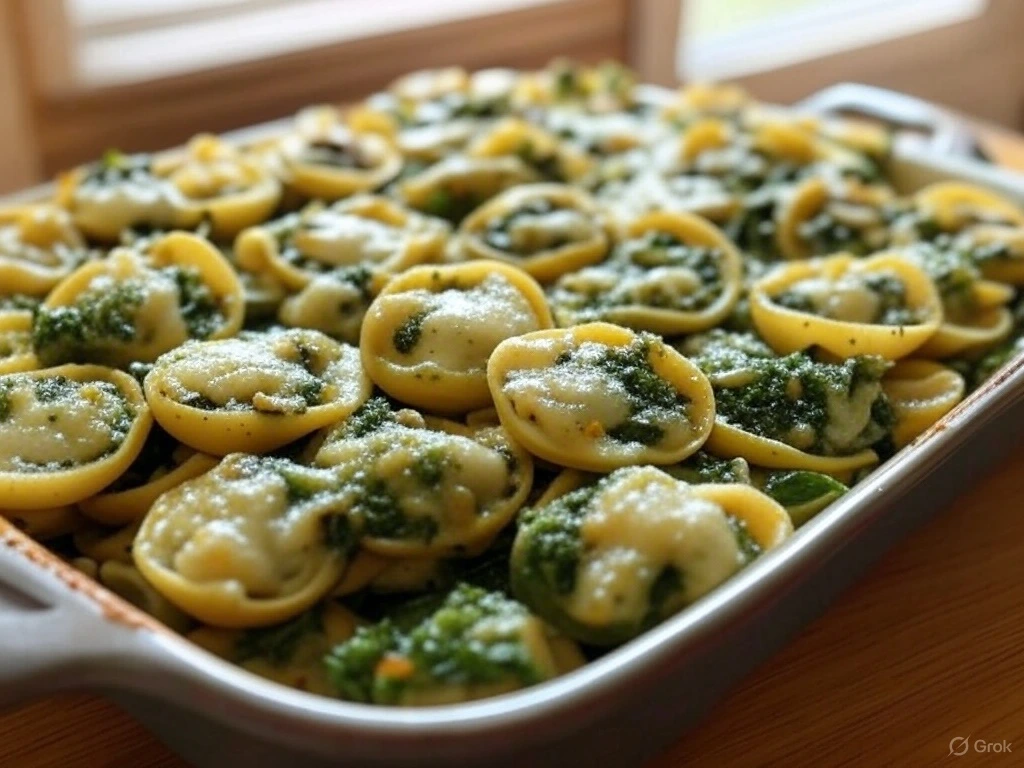
- Description: Jumbo pasta shells stuffed with a blend of spinach, mushrooms, ricotta (or cashew cheese), and baked in marinara sauce.
- Prep Time: 15 minutes
- Cooking Time: 30 minutes
- Difficulty: Moderate
Ingredients:
- 12 jumbo pasta shells
- 2 cups fresh spinach (chopped)
- 1 cup mushrooms (chopped)
- 1 cup ricotta (or cashew cheese)
- 2 cups marinara sauce
Instructions:
- Preheat oven to 375°F (190°C). Cook pasta shells according to package instructions; drain and set aside.
- Sauté spinach and mushrooms in olive oil until softened. Let cool slightly.
- In a bowl, combine sautéed veggies with ricotta, salt, and pepper.
- Stuff each shell with the filling and place in a baking dish coated with marinara sauce. Cover with remaining sauce.
- Bake for 20–25 minutes until bubbly. Garnish with fresh parsley before serving.
6. Black Bean and Corn Tacos

- Description: Soft corn tortillas filled with spiced black beans, sweet corn, diced tomatoes, and a squeeze of lime, topped with avocado crema.
- Prep Time: 10 minutes
- Cooking Time: 10 minutes
- Difficulty: Easy
Ingredients:
- 1 can black beans (rinsed)
- 1 cup corn kernels
- 1/2 cup diced tomatoes
- 1 tsp cumin
- 1 tsp chili powder
- Corn tortillas
- Avocado crema (blend avocado, lime juice, and plant-based yogurt)
Instructions:
- Heat black beans, corn, cumin, and chili powder in a pan until warmed through.
- Warm tortillas in a skillet or microwave.
- Fill tortillas with bean mixture, diced tomatoes, and drizzle with avocado crema.
- Serve with lime wedges and cilantro garnish.
7. Creamy Avocado Pasta
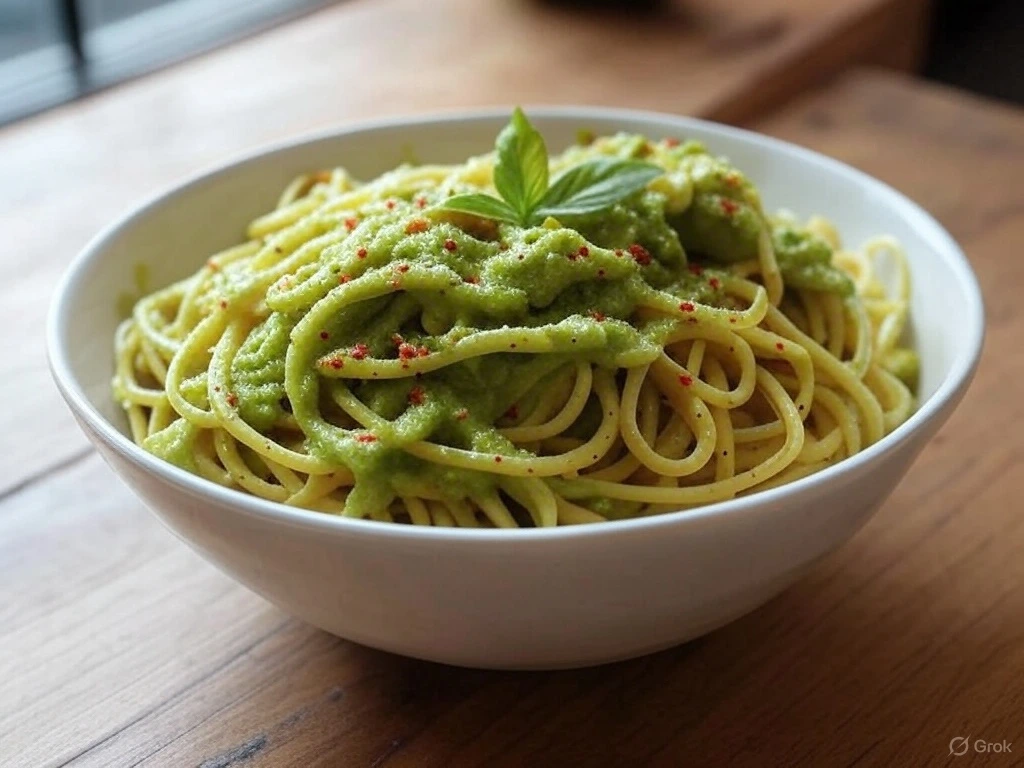
- Description: A dairy-free pasta dish made with a creamy avocado sauce, garlic, lemon juice, and spinach.
- Prep Time: 10 minutes
- Cooking Time: 10 minutes
- Difficulty: Easy
Ingredients:
- 8 oz spaghetti
- 1 ripe avocado
- 2 cloves garlic
- 2 tbsp lemon juice
- 2 tbsp olive oil
- Salt and pepper to taste
Instructions:
- Cook spaghetti according to package instructions; reserve 1/4 cup of pasta water.
- Blend avocado, garlic, lemon juice, olive oil, salt, and pepper in a food processor until smooth.
- Toss cooked pasta with avocado sauce, adding reserved pasta water as needed to loosen.
- Top with red chili flakes and basil leaves before serving.
8. Vegan Lentil Soup
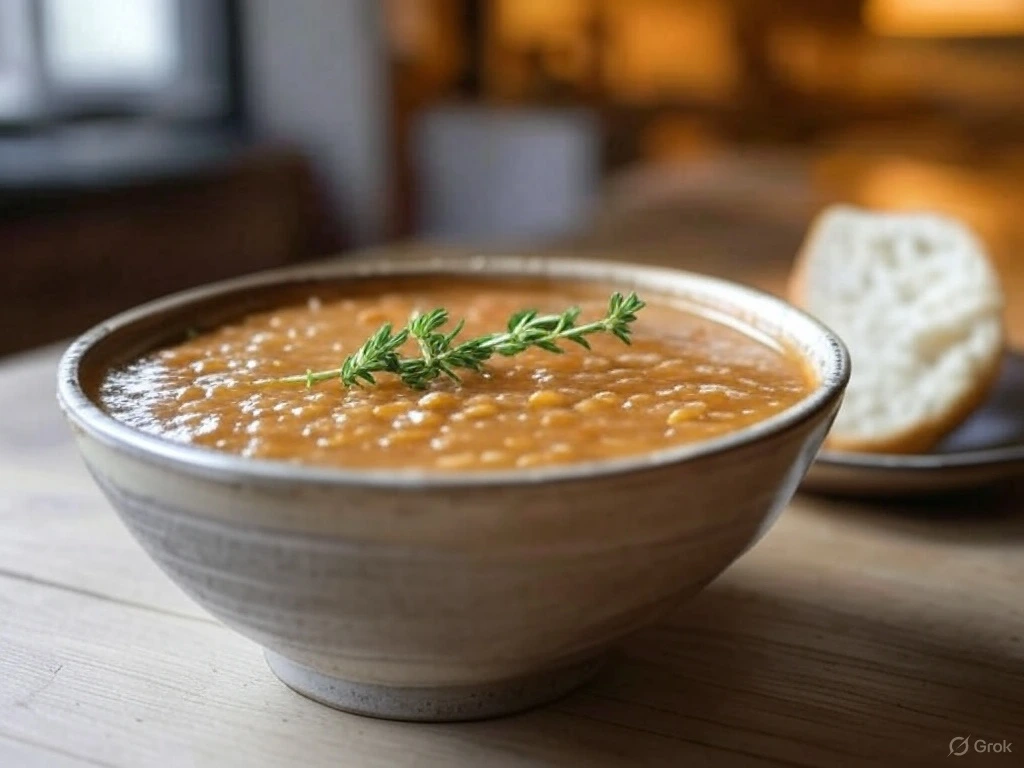
- Description: A comforting soup made with lentils, carrots, celery, and tomatoes, seasoned with thyme and bay leaves.
- Prep Time: 10 minutes
- Cooking Time: 30 minutes
- Difficulty: Easy
Ingredients:
- 1 cup green lentils
- 1 onion (chopped)
- 2 carrots (chopped)
- 2 celery stalks (chopped)
- 1 can diced tomatoes
- 4 cups vegetable broth
- 1 tsp thyme
Instructions:
- Sauté onion, carrots, and celery in olive oil until softened.
- Add lentils, diced tomatoes, vegetable broth, and thyme. Bring to a boil, then reduce heat and simmer for 25 minutes.
- Season with salt and pepper. Serve hot with crusty bread.
9. Overnight Oats with Berries and Almond Butter
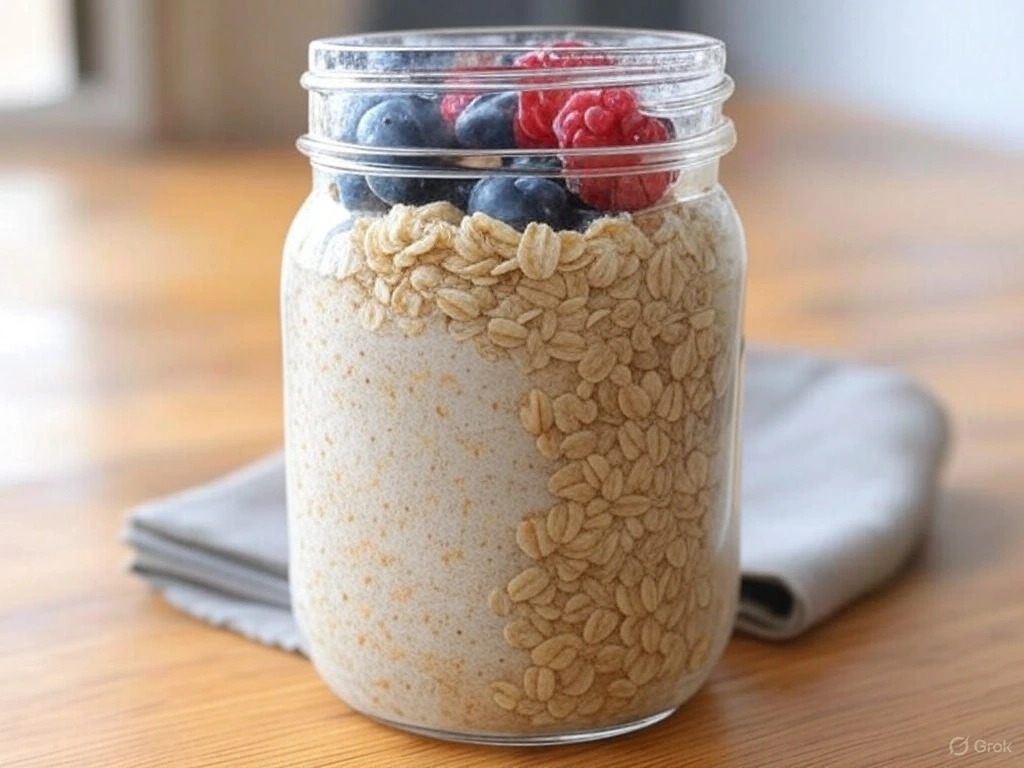
- Description: A no-cook breakfast featuring rolled oats soaked in almond milk, layered with chia seeds, fresh berries, and a dollop of almond butter.
- Prep Time: 5 minutes
- Cooking Time: None
- Difficulty: Easy
Ingredients:
- 1/2 cup rolled oats
- 1/2 cup almond milk
- 1 tbsp chia seeds
- 1/4 cup mixed berries
- 1 tbsp almond butter
Instructions:
- Combine oats, almond milk, and chia seeds in a jar. Stir well.
- Refrigerate overnight.
- Top with fresh berries and a dollop of almond butter before serving.
10. Roasted Veggie Grain Bowl
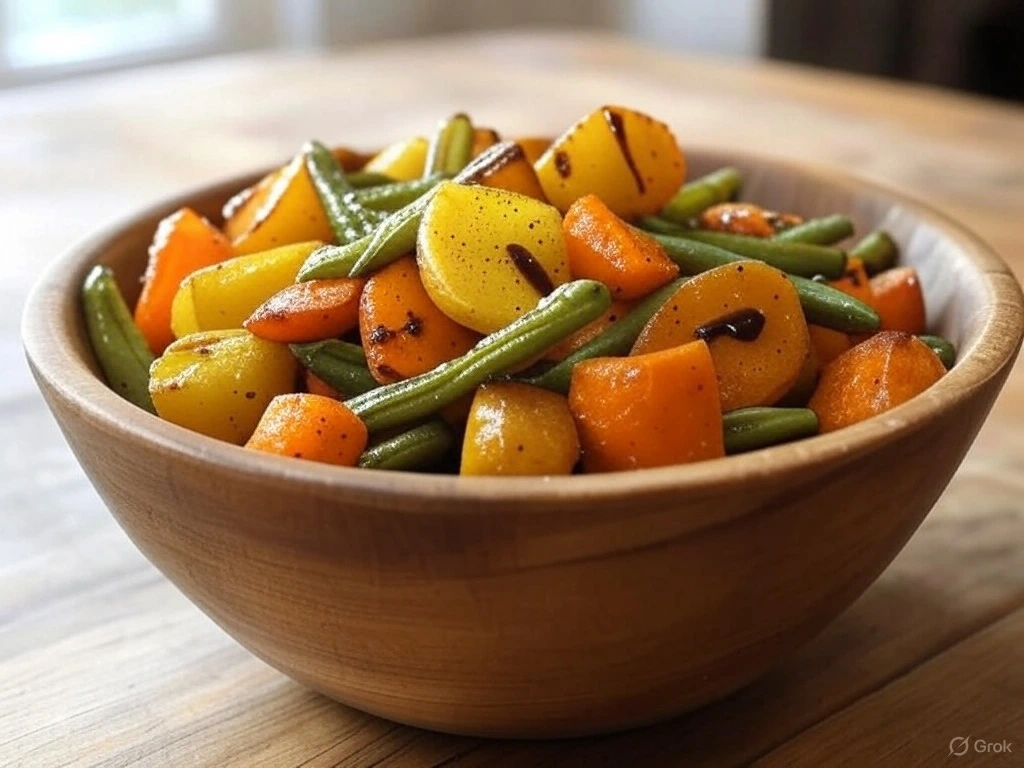
- Description: A mix of roasted zucchini, broccoli, and carrots served over farro or brown rice, finished with a balsamic glaze.
- Prep Time: 10 minutes
- Cooking Time: 25 minutes
- Difficulty: Easy
Ingredients:
- 1 cup farro (or brown rice)
- 1 zucchini (sliced)
- 1 cup broccoli florets
- 1 carrot (sliced)
- Balsamic glaze
Instructions:
- Cook farro according to package instructions.
- Toss veggies with olive oil, salt, and pepper. Roast at 400°F (200°C) for 20 minutes.
- Assemble bowls: Start with farro, then top with roasted veggies. Drizzle with balsamic glaze.
11. Tempeh Stir-Fry with Broccoli

- Description: Crispy tempeh stir-fried with broccoli, snap peas, and soy-ginger sauce, served over jasmine rice.
- Prep Time: 10 minutes
- Cooking Time: 15 minutes
- Difficulty: Easy
Ingredients:
- 8 oz tempeh (cut into bite-sized cubes)
- 2 cups broccoli florets
- 1 cup snap peas
- 2 cloves garlic (minced)
- 1 tbsp fresh ginger (grated)
- 3 tbsp soy sauce (or tamari for gluten-free)
- 1 tbsp sesame oil
- 1 tbsp olive oil
- 1 tsp sriracha (optional, for heat)
- Cooked jasmine rice (for serving)
- Sesame seeds and green onions (for garnish)
Instructions:
Step 1: Prepare the Tempeh
- Cut the tempeh into small cubes or slices for easy stir-frying.
- Heat 1 tablespoon of olive oil in a large skillet or wok over medium-high heat.
- Add the tempeh cubes to the pan and cook for 4–5 minutes, flipping occasionally, until golden brown on all sides. Remove the tempeh from the pan and set aside.
12. Cauliflower Fried Rice
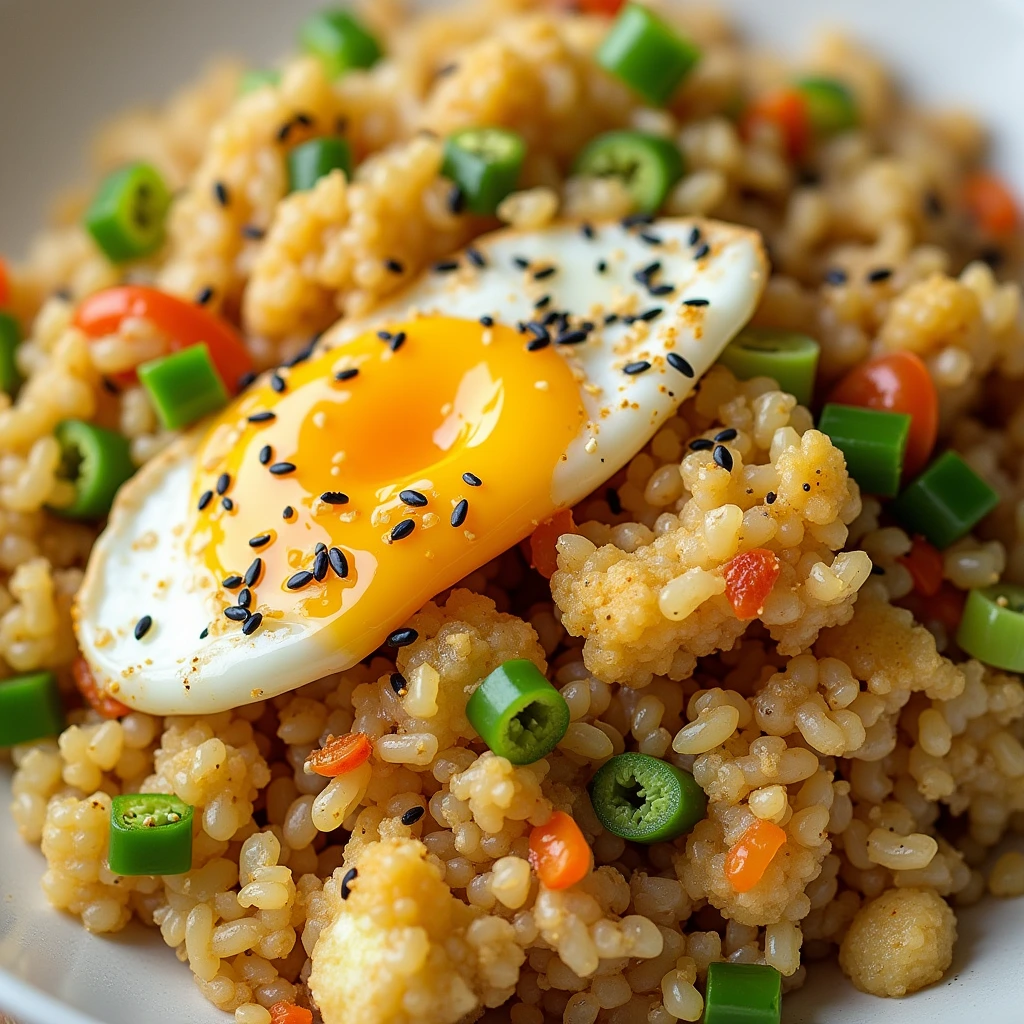
- Description: A low-carb alternative to traditional fried rice, made with riced cauliflower, edamame, carrots, and scrambled eggs or tofu.
- In the same skillet, add a splash of sesame oil (about 1 teaspoon).
- Toss in the minced garlic and grated ginger. Sauté for 30 seconds until fragrant.
- Add the broccoli florets and snap peas to the skillet. Stir-fry for 5–7 minutes, or until the broccoli is tender but still crisp. If the pan gets too dry, add a tablespoon of water to prevent sticking.
Step 3: Combine and Flavor
- Return the cooked tempeh to the skillet with the vegetables.
- Pour in the soy sauce (or tamari) and sriracha (if using). Stir everything together to coat evenly. Cook for an additional 2 minutes to allow the flavors to meld.
Step 4: Serve
- Serve the tempeh stir-fry hot over a bed of fluffy jasmine rice.
- Garnish with a sprinkle of sesame seeds and chopped green onions for added flavor and presentation.
Tips for Success:
- Marinate the Tempeh: For extra flavor, marinate the Tempeh cubes in a mixture of soy sauce, garlic powder, and a splash of maple syrup for 15–30 minutes before cooking.
- Add Extra Veggies: Feel free to toss in other veggies like bell peppers, carrots, or mushrooms for variety.
- Make It Spicier: Add red pepper flakes or extra sriracha if you enjoy a kick of heat.
Nutritional Benefits:
This dish is packed with plant-based protein from the tempeh and fiber from the broccoli and snap peas. It’s also rich in vitamins A, C, and K, as well as iron and magnesium—perfect for fueling your body and keeping you energized throughout the day.
Recipe Variations: Get Creative with Plant-Based Protein Power
These recipes are incredibly versatile—swap ingredients, adjust flavors, and tailor them to your preferences. Here are some creative ideas to inspire you:
Swap Ingredients for Variety
- Replace quinoa with farro or bulgur for a chewier base.
- Use black beans instead of chickpeas for a heartier texture.
- Swap spinach for kale or arugula for added bitterness and nutrients.
Experiment with Global Flavors
- Mexican Twist: Top bowls with salsa, guacamole, and cilantro.
- Asian Fusion: Drizzle sesame oil and soy sauce over stir-fried tofu and broccoli.
- Mediterranean Style: Add olives, artichokes, and a sprinkle of feta (or nutritional yeast for vegans).
Snack-Sized Options
- Turn leftover grain bowls into stuffed bell peppers or lettuce wraps.
- Blend extra veggies and legumes into soups or stews.
The possibilities are endless—let your taste buds guide you!
Conclusion: Unlock the Potential of Plant-Based Protein Power
You’ve got all the tools you need to create delicious, protein-packed meals that will fuel your body and delight your taste buds. These 15 quick recipes prove that plant-based eating doesn’t have to be complicated or boring—it can be vibrant, satisfying, and oh-so-delicious!
So go ahead, experiment with new flavors, mix up your favorite ingredients, and make these recipes your own. Whether you’re a busy parent, a fitness enthusiast, or just someone looking to eat healthier, Plant-Based Protein Power has something for everyone. Dive in, get creative, and enjoy the journey to better health—one bite at a time!
Not Eating This Recipe? Here’s What Your Body Will Be Deprived Of!
Skipping plant-based protein can have different effects depending on your overall diet. If you replace it with animal protein, you’ll still get essential nutrients, but if you don’t get enough protein at all, it can lead to deficiencies. Here’s what happens to your body:
1. Muscle Loss & Weakness
- Why: Protein is essential for muscle repair and growth. Without enough protein, muscle mass can decrease, leading to weakness over time.
2. Slower Metabolism
- Why: Protein helps maintain muscle, which keeps metabolism active. A protein deficiency can slow calorie burning, making weight management harder.
3. Weaker Immune System
- Why: Antibodies (which fight infections) are made from proteins. Skipping protein can make you more susceptible to illness.
4. Poor Skin, Hair and Nails
- Why: Keratin, collagen, and elastin (which support healthy skin, hair, and nails) rely on protein. A deficiency can lead to brittle nails, hair loss, and dull skin.
5. Hormonal Imbalance
Why: Proteins play a role in hormone production. Insufficient protein intake may affect mood, appetite, and even reproductive health.
6. Increased Hunger and Cravings
- Why: Protein helps keep you full longer. Without it, you may experience frequent hunger and cravings, often for unhealthy, high-carb foods.
If you don’t eat plant-based protein but get enough protein from animal sources, you’ll still meet your body’s protein needs. However, you may miss out on fiber, antioxidants, and plant-based nutrients that support digestion and heart health.
Again, balance is key!
💡 Final Thought 💡
Whether you eat plant-based protein or skip it, the key is maintaining a balanced diet that meets your protein needs. Plant-based proteins offer fiber, antioxidants, and heart health benefits, while animal proteins provide complete amino acids more easily. If you avoid plant-based protein entirely, ensure you’re getting enough protein, fiber, and essential nutrients from other sources. In the end, variety and moderation are what keep your body strong and healthy! 💪🌱
FAQs: Your Questions Answered
Q1: Are these recipes suitable for beginners?
Absolutely! Each recipe is designed to be simple and approachable, even if you’re new to cooking or plant-based diets.
Q2: How do I ensure I’m getting enough protein?
By combining ingredients like lentils, tofu, quinoa, nuts, and seeds, you’ll easily meet your daily protein needs. Most recipes provide 15–25g of protein per serving.
Q3: Can I freeze these meals?
Yes! Many components, like cooked grains, lentils, and roasted veggies, freeze beautifully. Just thaw overnight in the fridge before reheating.
Q4: What are the health benefits of plant-based proteins?
Plant-based proteins are rich in fiber, vitamins, and antioxidants. They support heart health, improve digestion, and reduce inflammation compared to animal-based proteins.
Q5: How long do leftovers last?
Most dishes stay fresh in the fridge for 3–5 days. Always store components separately to maintain texture and flavor.
Q6: Can I customize these recipes for special diets?
Definitely! These recipes are naturally gluten-free (with substitutions) and can be adapted for nut-free, soy-free, or low-carb diets.
Remember that every recipe is a step toward a healthier you! —until next time,
Happy cooking!
HealthyFam—where quick meets nourishing!
10 Source Links
- Healthline: Benefits of Plant-Based Proteins
- Mayo Clinic: High-Protein Foods for Vegetarians
- BBC Good Food: Vegan Protein Sources
- Harvard T.H. Chan School of Public Health: Plant-Based Diets
- Minimalist Baker: Easy Vegan Recipes
- Forks Over Knives: Meal Prep Tips
- Verywell Fit: Protein Content of Foods
- Academy of Nutrition and Dietetics: Vegetarian Nutrition
- Medical News Today: Best Plant-Based Proteins
- Oh She Glows: Vegan Cooking Inspiration


